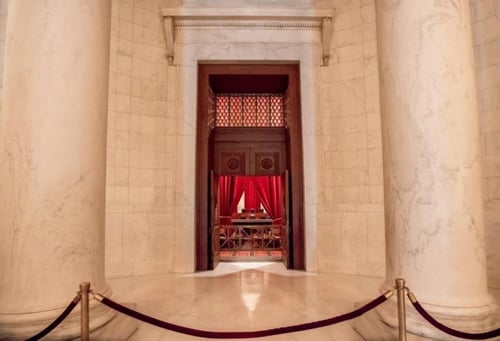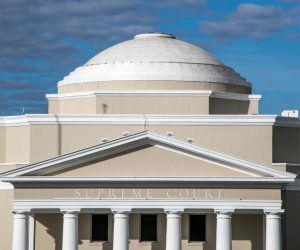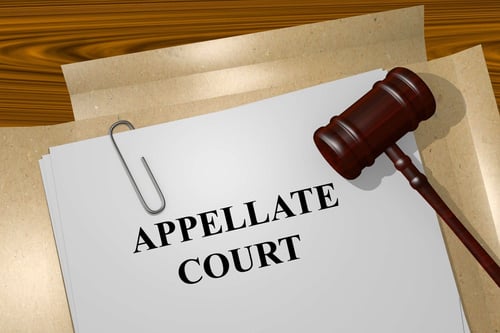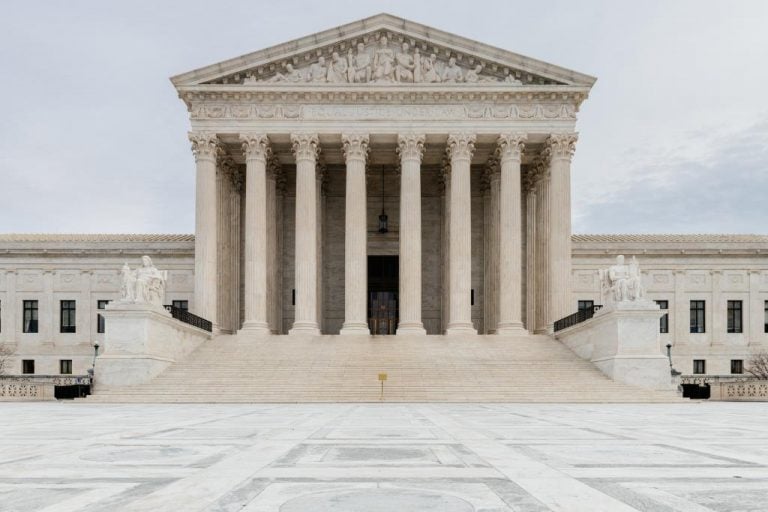
Filing A Petition For Writ Of Certiorari & Brief Of Amicus Curiae To The United States Supreme Court – Part 1 Of 2
18
Filing A Petition For Writ Of Certiorari & Brief Of Amicus Curiae To The United States Supreme Court – Part 1 Of 2
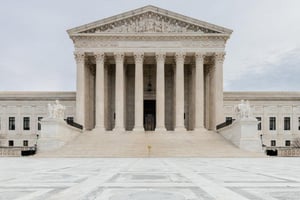 I was recently asked by a fellow attorney to research how to file a petition for writ of certiorari and a brief of amicus curiae in the United States Supreme Court (USSC). This is the first of two articles that will address, in limited scope, filing:¹
I was recently asked by a fellow attorney to research how to file a petition for writ of certiorari and a brief of amicus curiae in the United States Supreme Court (USSC). This is the first of two articles that will address, in limited scope, filing:¹
-
A petition for writ of certiorari in the United States Supreme Court, on review from a judgment or order entered by the 11th Circuit Court of Appeals
-
An amicus curiae brief at the petition stage
These articles will not address the rules pertaining to filing an amicus curiae brief at the merits stage or oral argument stage, a cross-petition for writ of certiorari, a response to any petition, an initial brief on the merits, procedures related to a case before the Court at the oral argument stage, etc.
Admission to the Bar
First, in order to file any petition in the USSC, the attorney of record must be admitted to the USSC. See Supreme Court Rule 5. The full requirements are listed in Rule 5, but in summary, the applicant must file both:
-
A certificate from the presiding judge or clerk of the highest court of Florida, showing his admission to practice there and that he is in good standing
-
A complete USSC form containing the applicant’s personal statement and the statement of two sponsors, who are members of the Bar of the USSC, and who personally know, but are not related to, the applicant
Appearance of Counsel
The attorney whose name, address, and telephone number appear on the cover of a document filed is considered counsel of record. See Supreme Court Rule 9. If the name of more than one attorney appears on the cover of the document, the attorney who is counsel of record should be clearly identified. Id. There can only be one counsel of record listed on the document. See Supreme Court Rule 34.1(f).
In the past, I have identified counsel of record by putting an asterisk by his or her name. I was also able to add the names of other attorneys on the petition, who were not members of the court, as long as counsel of record was clearly marked and was a member. See Supreme Court Rule 34.1(f).
Considerations Governing Review on Certiorari
Review on a writ of certiorari is a matter of judicial discretion, and a petition for a writ of certiorari will only be granted for compelling reasons. See Supreme Court Rule 10. Rule 10 enumerates some such “compelling reasons,” although the list is not exhaustive.
The Court lists the following examples, which indicate the character of the reasons the Court will consider granting petitions:
A. a United States court of appeals has entered a decision that conflicts with the decision of another U.S. court of appeals on the same important matter; has decided an important federal question in a way that conflicts with a decision by a state court of last resort; or has so far departed from the accepted and usual course of judicial proceedings, or sanctioned such a departure by a lower court, as to call for an exercise of this Court’s supervisory power
B. a state court of last resort has decided an important federal question in a way that conflicts with the decision of another state court of last resort or of a U.S. court of appeals
C. a state court or a U.S. court of appeals has decided an important question of federal law that has not been, but should be, settled by this Court, or has decided an important federal question in a way that conflicts with relevant decisions of this Court
Note that a petition for writ of certiorari is rarely granted when the asserted error consists of erroneous factual findings or the misapplication of a properly stated rule of law. See Supreme Court Rule 10.
How to Seek Review
A Petitioner must file 40 copies of a petition for writ of certiorari and shall pay the applicable docket fee. See Supreme Court Rule 12. The docket fee is $300. See Supreme Court Rule 38(a).
Rule 12.3 also provides that it is the petitioner’s duty to notify all respondents, on a form supplied by the clerk, of:
-
The date of the filing
-
The date the case was placed on the docket
-
The docket number of the case
Rule 29 contains the requirements for service. All parties to the proceeding in the court whose judgment is sought to be reviewed are deemed parties entitled to file documents, unless the petitioner notifies the clerk in writing of its belief that a party has no interest in the outcome of the petition. See Supreme Court Rule 12.6.
A copy of such notice must be served on all parties in accordance with Rule 29. Id.
Under Rule 12.4, “[w]hen two or more judgments are sought to be reviewed on a writ of certiorari to the same court and involve identical or closely related questions, a single petition for a writ of certiorari covering all the judgments suffices.”
Rule 12.7 provides that, within a petition, a party may cite or quote from the record even if the record has not been transmitted to the USSC. The USSC will not get the record, unless the clerk notifies the clerk of the lower court to certify and transmit the record. See Supreme Court Rule 12.7.
Time for Petitioning
A petition for writ of certiorari to review a judgment entered by a United States Court of Appeals is timely if filed within 90 days after entry of the judgment. See Supreme Court Rule 13.1. The 90-day timeline runs from the date of the judgment or order sought to be reviewed, not from the issuance date of the mandate. See Supreme Court Rule 13.3.
“But if a petition for rehearing is timely filed in the lower court by any party, or if the lower court appropriately entertains an untimely petition for rehearing or sua sponte considers rehearing, the time to file the petition for a writ of certiorari for all parties runs from the date of the denial of the rehearing or, if rehearing is granted, the subsequent entry of judgment.” Id.
A justice may extend the time for filing a petition, for good cause, for a period not exceeding 60 days. See Supreme Court Rule 13.5. Such request shall set out the basis for jurisdiction, identify the judgment sought to be reviewed, include a copy of the opinion and any order respecting rehearing and set out the specific reasons why an extension of time is justified. Id.
Note that the application must be filed at least 10 days before the date the petition is due, barring extraordinary circumstances. Id.; see also Supreme Court Rule 30.2. Applications for extension of time are disfavored. Id. Rule 22 governs applications to a single justice. See Supreme Court Rule 21.1.
The USSC website lists Justice Clarence Thomas as the associate justice assigned to the 11th Circuit. Any application for an extension of time should be addressed to him.
Applications to Individual Justices
Rule 22 provides that an application addressed to an individual justice shall be filed with the clerk, who will transmit it promptly to the justice.
The original and two copies of any such application shall be prepared as required by Rule 33.2, and shall be accompanied by proof of service as required by Rule 29. See Supreme Court Rule 22.2.
Content of a Petition for Writ of Certiorari
The content of a petition is governed by Supreme Court Rule 14. In summary, the requirements of a petition are as follows:
a. Questions presented for review – set out on the first page following the cover without any other information appearing on that page
b. A list of all parties to the proceeding in the court whose judgment is sought to be reviewed (unless the case caption contains the names of all parties) AND the corporate disclosure statement required by Rule 29.6
c. A table of contents, which includes a list of items contained in the appendix, as well as a table of authorities
d. Citations of the official and unofficial reports of the opinions and orders entered in the case
e. A statement of jurisdiction, showing:
i. The date the judgment or order sought to be reviewed was entered
ii. The date of any order respecting rehearing, and the date and terms of any order granting and extension of time to file the petition for a writ of cert.
iii. N/A – regarding cross-petitions
iv. The statutory provision believed to confer jurisdiction on the court to review the judgment or order in question
v. If applicable, a statement that the notifications required by Rule 29.4(b) or (c) have been made.
f. The Constitutional provisions, treatises, statutes, ordinances and regulations involved in the case, set out verbatim with appropriate citation. If the provisions are lengthy, their citation will suffice, and the pertinent text shall be set out in the appendix.
g. A statement of the case, containing the following:
i. N/A
ii. If review of a judgment of a U.S. court of appeals is sought, the basis for federal jurisdiction in the court of first instance
h. A direct and concise argument amplifying the reasons relied on for allowance of the writ. See Rule 10.
i. An appendix containing the following items enumerated in Rule 14.1(i), in the order set forth in that rule. Note that, if the material required for the appendix is voluminous, it may be presented in a separate volume or volumes, with appropriate covers. See Supreme Court Rule 14.1(i).
Rule 14 also explains that all arguments for the writ must be set out in the body of the petition, and that a petition may not exceed the page limitations of Rule 33. See Supreme Court Rule 14.1(i)(2)-(3). Rule 33.1(g)(i) provides that a petition for writ of certiorari in booklet form must not exceed 9,000 words, excluding the sections noted in Rule 33.1(d).
If the clerk determines the petition does not comply with the applicable rules, it will return the petition with a letter indicating the deficiency. See Supreme Court Rule 14.1(i)(5). In the event that happens, the petitioner has no more than 60 days to correct the deficiency, in order for the petition to be deemed timely filed. Id.
A response in opposition to the petition is not mandatory, except when ordered by the Court. See Supreme Court Rule 15.1. Any brief in opposition shall be filed within 30 days after the case is placed on the docket, unless the time is extended. See Supreme Court Rule 15.2. The respondent may not file a motion to dismiss; any argument that the Court lacks jurisdiction must be filed within the response itself. See Supreme Court Rule 15.4.
The Clerk will distribute the petition for the Court’s consideration upon receiving an express waiver of the right to file a brief in opposition or, if no waiver or brief in opposition is filed, upon the expiration of the time allowed for filing. See Supreme Court Rule 15.5. If a brief in opposition is timely filed, the Clerk will distribute the petition, any response, and any reply for the Court’s consideration no less than 14 days after the brief in opposition is filed, unless the petitioner expressly wives the 14-day waiting period. Id.
While a petitioner may file a reply brief, distribution of the briefs and consideration by the Court will not be deferred pending receipt of the reply brief. See Supreme Court Rule 15.6. Forty copies of the reply brief should be filed. Id.
Any party may file a supplemental brief at any time while the petition is pending, “calling attention to new cases, new legislation, or other intervening matter not available at the time of the party’s last filing.” See Supreme Court Rule 15.8 (emphasis added). Such supplemental brief shall be restricted to new matter and shall follow (insofar as applicable) the form for a brief in opposition. Id.
In Part 2, we’ll pick up our discussion with the disposition of a petition for a writ of certiorari. Be sure to check back for it.
Exceptionally Qualified Appellate Attorneys
The Brownlee Law Firm specializes in both civil and criminal appeals at the state and federal level. Contact us today with your questions.
Source:
1 All Rules cited in this article are summarized or quoted directly from “Rules of the Supreme Court of the United States” adopted April 18, 2019 and effective July 1, 2019 and can be found here.


